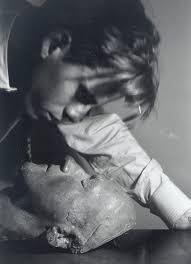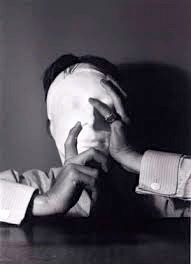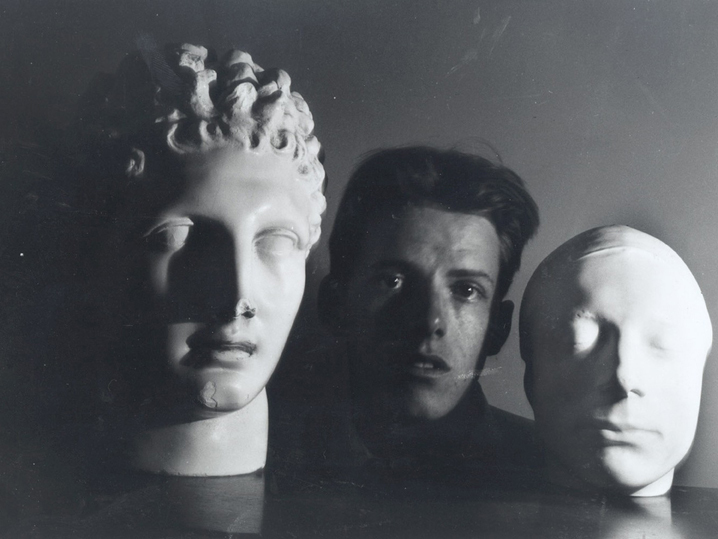“you were everywhere beside me, masked, / As who was not, in laughter, pain, and love.” -- James Merrill, “Days of 1965”
"The Black Swan" page on this website explores the influence on the poem of Merrill’s first lover, Kimon Friar. As his tutor at Amherst College, Friar assigned Merrill the task of writing a poem about a swan that became “The Black Swan.” Friar also initiated Merrill’s fascination with masks. He published an essay entitled "Medusa-Mask" in Poetry (1940) that Merrill reprinted in the Amherst College student publication Medusa. Friar wrote that we should remember the Medusa was once beautiful and may still be to the "inner vision." For Friar, Medusa is a dangerous muse-like figure comparable to Keats's la belle dame, Walter Pater's Mona Lisa, or T. S. Eliot's Lady of Situations. To Friar she represents the world's beauty, design, and form, which is more likely to stun the poet into silence rather than poetry. To face the challenge, the artist might find a “reflective image in the myth of Perseus, and a mask of artifice in Medusa.” Like Perseus, the artist should look only upon her in the mirror of art.
As Langdon Hammer explains in Mask of the Poets: James Merrill & Kimon Friar (Athens 2003), Friar's obsession with masks inspired him to make at the age of 22 a life-mask “in imitation of John Keats’s life-mask which was created when the poet was 22” (19). Merrill recalled the mask when he remembered “those wonderful rooms [at Amherst] with the large plaster Hermes above the mantle, the life mask of himself in brown plaster on the sill” (16). (See also Hammer's James Merrill: Life and Art, 91.)
In the left margin appear Friar’s photographs of Merrill posing with the masks of Friar and Keats as well as with a head of Hermes. Hammer suggests that these photographs mark Merrill’s assumption of a new identity as poet and homosexual, but he also observes “disturbing implications in this idea. If the role in which Friar cast Merrill was liberating for him, as it clearly was, it must have also been constraining and oppressive; it must have imposed a burden on Merrill in its own way as restricting as the family identity that loving Friar promised to free him from” (24). (See also Hammer's James Merrill: Life and Art, 93-94.) Merrill’s ambivalent feelings are expressed in the image of the beautiful but constricting “thin gold mask” of “For Proust.”
The images of Merrill with Hermes, and holding the mask of Keats, from Hammer's pamphlet also appear on the website of the American Academy of Greece.



